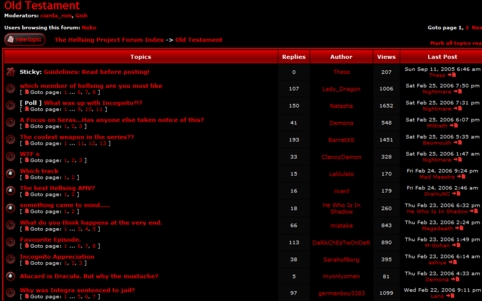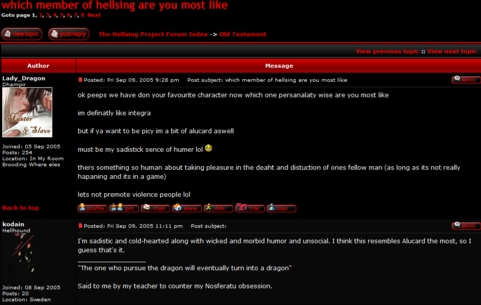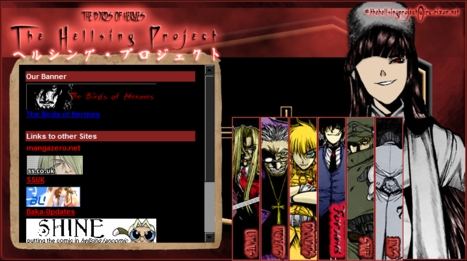
|
Let’s log in together and enter the heading of “Canon,” then the subheading “Old Testament.” The particular group of writings posted on this subheading take over the viewable page, bringing the reader further into the interactive portion of this eLiterary piece. A list of post titles spans down the left of the page, with information on the level of interaction, author of the individual writing, and information on how recent the last interaction took place. We could spend virtually an eternity reading each post and the subsequent replies, or we can choose to read one post and leave. This exhibits Calvino’s quality of multiplicity in that there are an infinite number of postings that can be made, with an infinite number of responses to each post that can be written as well. The level of interaction in which a reader chooses to participation becomes merely a matter of preference at this point. |
| We also find that the material written in each post can vary in content. Let’s click on the post for “which member of hellsing are you most like.” This title indicates the contents following will be a discussion among message board members about the characters in the manga “Hellsing” they most identify with. For some readers, this concept might seem fairly trivial; on the other hand, the readers taking part in this interactive discussion apparently felt that this airy topic would potentially create an ice-breaker. While a trivial concept, the subject brings a specific group of readers together to have a discussion about themselves without worrying about how far across the world each reader may be, relative to each other. The world becomes smaller, in a cliqued sense, for the readers of BoH’s “The Hellsing Project.” They meet thanks to the our friend, interaction. |

|

|
Leaving the message board for BoH’s “The Hellsing Project,” we return to the actual website for the eLiterary piece. We left off at the links to outside eLiterature, which is where I would like to bring this exhibit to a close. BoH offered a fairly short, straightforward work of eLiterature due to the time-sensitivity of their materials. Giving their readers the option to read some of their favorite eLiterature further increases the level of interaction between the readers and the authors. In most cases, the authors of conventional print literature do not build a repoire with their readers. Authors of eLiterature are better able to interact with their readers and even build friendships with the readers. To recap, Exhibit B should have further explained the qualities of Calvino’s visibility and multiplicity, Hayles’ materiality, and the qualities of creativity, interaction, and simplicity. |

The Hellsing Project |
| Go Back |
| Close Exhibit B |